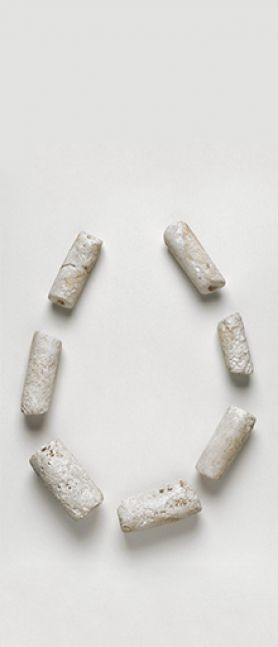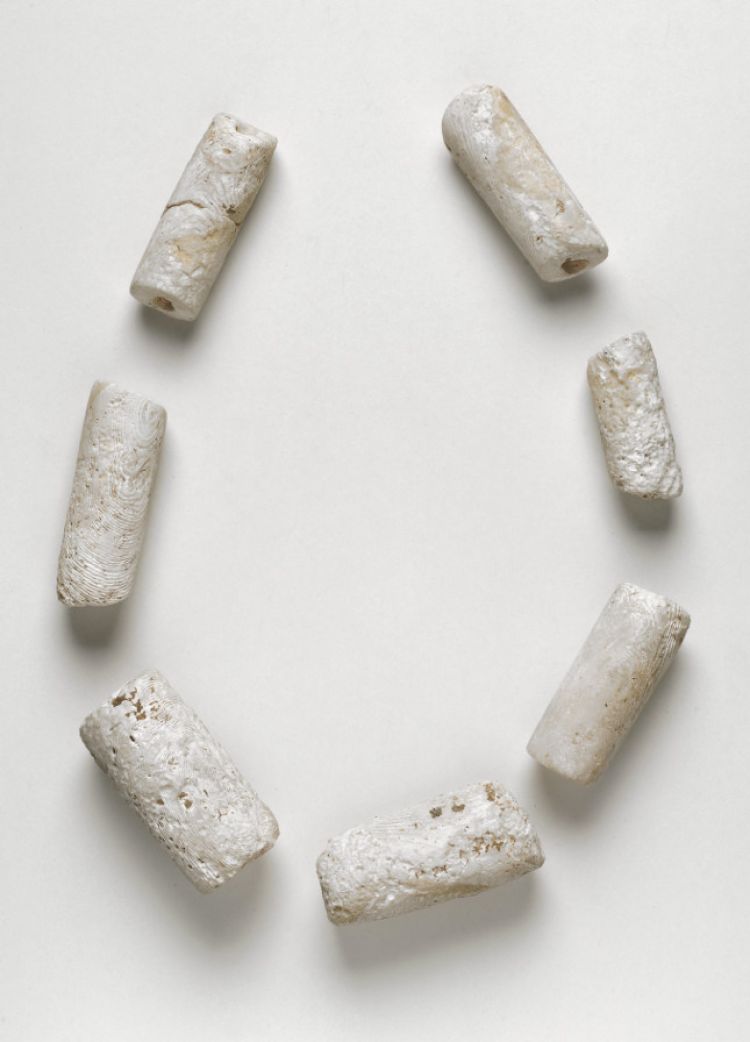Spondylus shell ornament
Early Neolithic (linear period)
Osthoffen-Breuschwickersheim
Room 3

This impressive ornament is made up of seven large cylindrical pearls and a large pendant, probably a belt clasp. It was made from a marine fossil, the shell of a mollusc called a spondylus. It comes from a grave excavated in 1915 in Osthoffen, to the west of Strasbourg. The skeleton was buried in the tomb in a folded position, characteristic of linear culture burials around 3800 BC. The spondylus ornament was found together with a fine sandstone sharpener, used to polish bone objects and placed behind the head of the deceased, and a polished stone axe. The complete ornament weighs 630 grams and, given its rarity and the need to import the raw material over long distances, it must have represented an important symbol of social prestige.

Parure en spondyle, Osthoffen, Néolithique, Photo : Musées de la Ville de Strasbourg